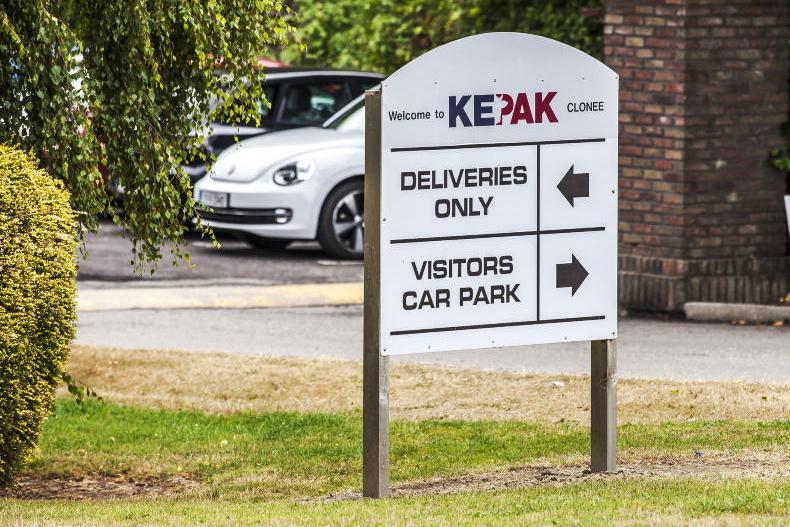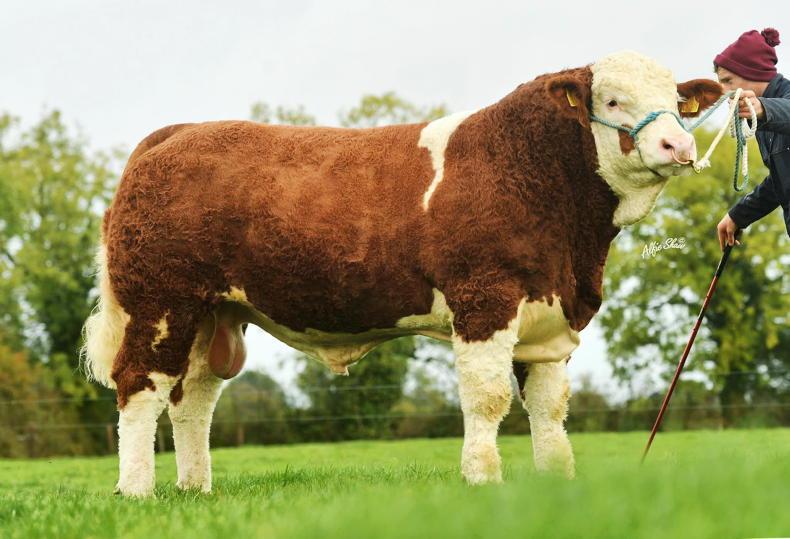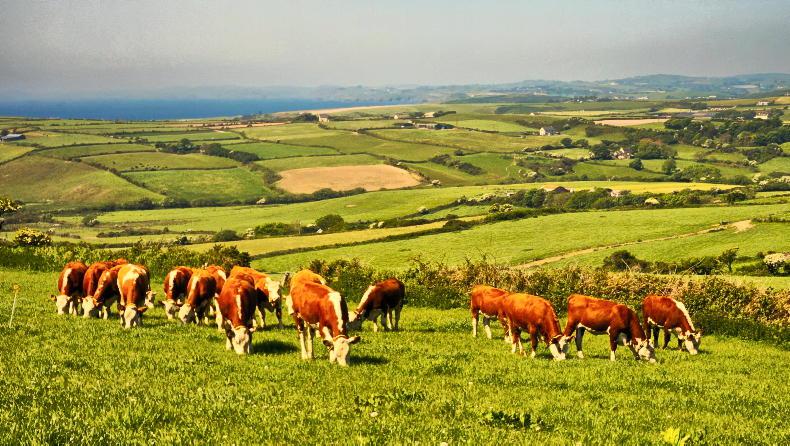In the coming week, it is expected that all cattle farmers will receive a letter from the Department of Agriculture detailing their herd’s TB risk category.
Based on a sample letter provided by the Department, farmers can expect to find the following information personalised for their own farm in the report.
1 - the herd's TB risk category

A herd's TB risk category will be based on three elements; if the herd is clear of TB, the length of time it has been free of TB, and the number of breakdowns in the last ten years.
In the above picture, C indicates the herd is free of TB. Herds currently experiencing a breakdown will be show by the letters INF.
The number after the letter C indicates the length of time a herd has been TB-free. Zero means less than 12 months and numbers one to 10 signal the years.
Any herd free for over 10 years will also show the number 10.
The final number in brackets shows the total number of TB breakdowns a herd has had in the last 10 years.
2 - where a herd ranks compared with other herds

The report shows how many herds are in each category. An arrow will indicate what category the herd is in. The red colours indicate higher risk herds, orange means medium risk while greener are lower-risk herds.
3 - the purchasing history of the herd

The above table will show farmers what risk category herds they purchased cattle from in the last three years. These will be broken down by lower risk (C7 to C10), medium risk (C4 to C6), and higher risk (INF to C3 or dealer herds).
4. The herd’s history of TB breakdowns

If the herd has suffered a breakdown in the last 10 years, its details will be included here.
It will show how long the breakdown lasted based on its start and end dates, the number of reactors and whether the reactors where homebred or bought in.
The tag numbers of animals removed as reactors and where they were sourced from will be included here also.
5 -at-risk animals in the herd

The tag numbers of three different sets of animals will be listed here:
Inconclusive animals that passed a retest.Animals that tested clear during a previous breakdown, whether in the owner’s or previous owner’s herd.Animals returned home from the mart unsold.The Department classes all these animals as being of a greater risk of TB and recommends farmers cull these animals as soon as possible.
6 - a summary of animal movements off-farm

The Department will also include where any animal moved off farm in the last 12 months has gone.
Read more
Fears unsold animals in marts may jeopardise herd TB status
20,000 farms classed as high-risk TB herds
In the coming week, it is expected that all cattle farmers will receive a letter from the Department of Agriculture detailing their herd’s TB risk category.
Based on a sample letter provided by the Department, farmers can expect to find the following information personalised for their own farm in the report.
1 - the herd's TB risk category

A herd's TB risk category will be based on three elements; if the herd is clear of TB, the length of time it has been free of TB, and the number of breakdowns in the last ten years.
In the above picture, C indicates the herd is free of TB. Herds currently experiencing a breakdown will be show by the letters INF.
The number after the letter C indicates the length of time a herd has been TB-free. Zero means less than 12 months and numbers one to 10 signal the years.
Any herd free for over 10 years will also show the number 10.
The final number in brackets shows the total number of TB breakdowns a herd has had in the last 10 years.
2 - where a herd ranks compared with other herds

The report shows how many herds are in each category. An arrow will indicate what category the herd is in. The red colours indicate higher risk herds, orange means medium risk while greener are lower-risk herds.
3 - the purchasing history of the herd

The above table will show farmers what risk category herds they purchased cattle from in the last three years. These will be broken down by lower risk (C7 to C10), medium risk (C4 to C6), and higher risk (INF to C3 or dealer herds).
4. The herd’s history of TB breakdowns

If the herd has suffered a breakdown in the last 10 years, its details will be included here.
It will show how long the breakdown lasted based on its start and end dates, the number of reactors and whether the reactors where homebred or bought in.
The tag numbers of animals removed as reactors and where they were sourced from will be included here also.
5 -at-risk animals in the herd

The tag numbers of three different sets of animals will be listed here:
Inconclusive animals that passed a retest.Animals that tested clear during a previous breakdown, whether in the owner’s or previous owner’s herd.Animals returned home from the mart unsold.The Department classes all these animals as being of a greater risk of TB and recommends farmers cull these animals as soon as possible.
6 - a summary of animal movements off-farm

The Department will also include where any animal moved off farm in the last 12 months has gone.
Read more
Fears unsold animals in marts may jeopardise herd TB status
20,000 farms classed as high-risk TB herds
















SHARING OPTIONS